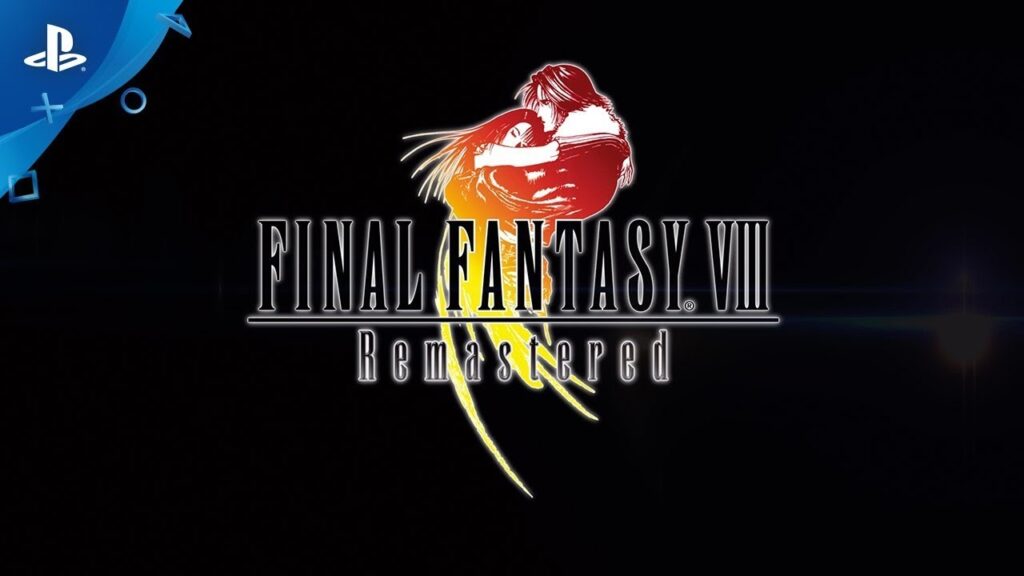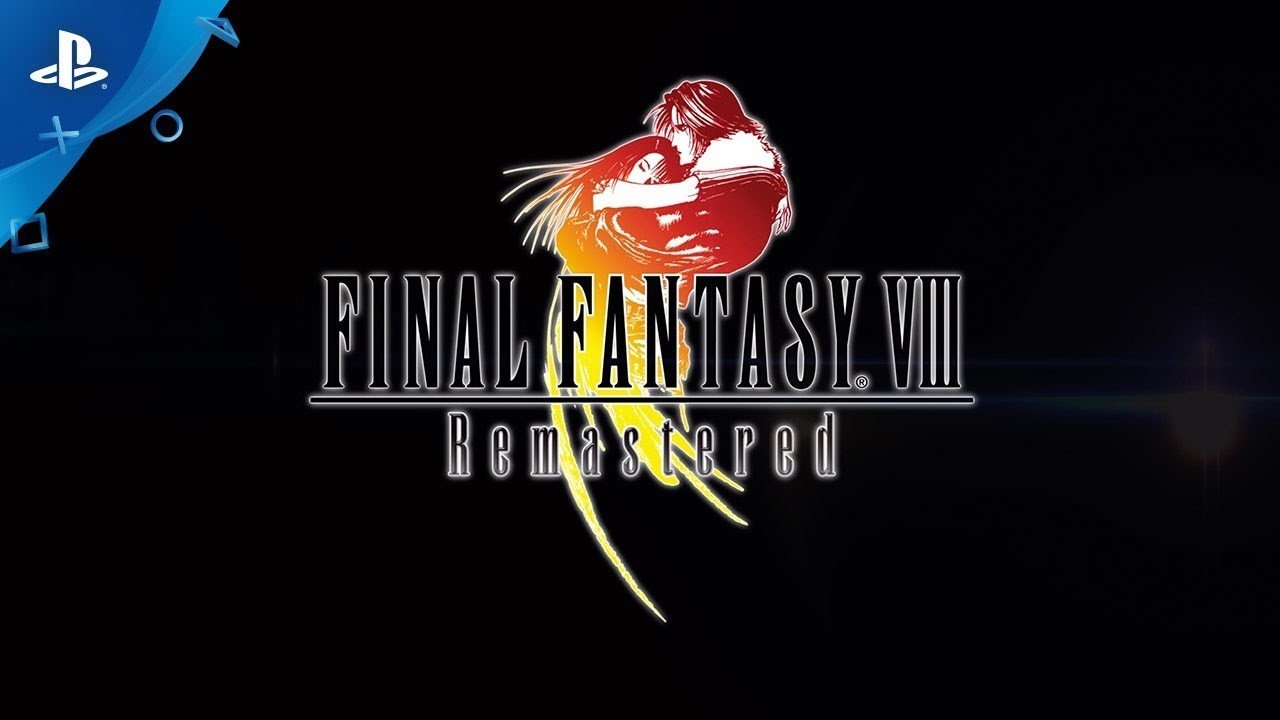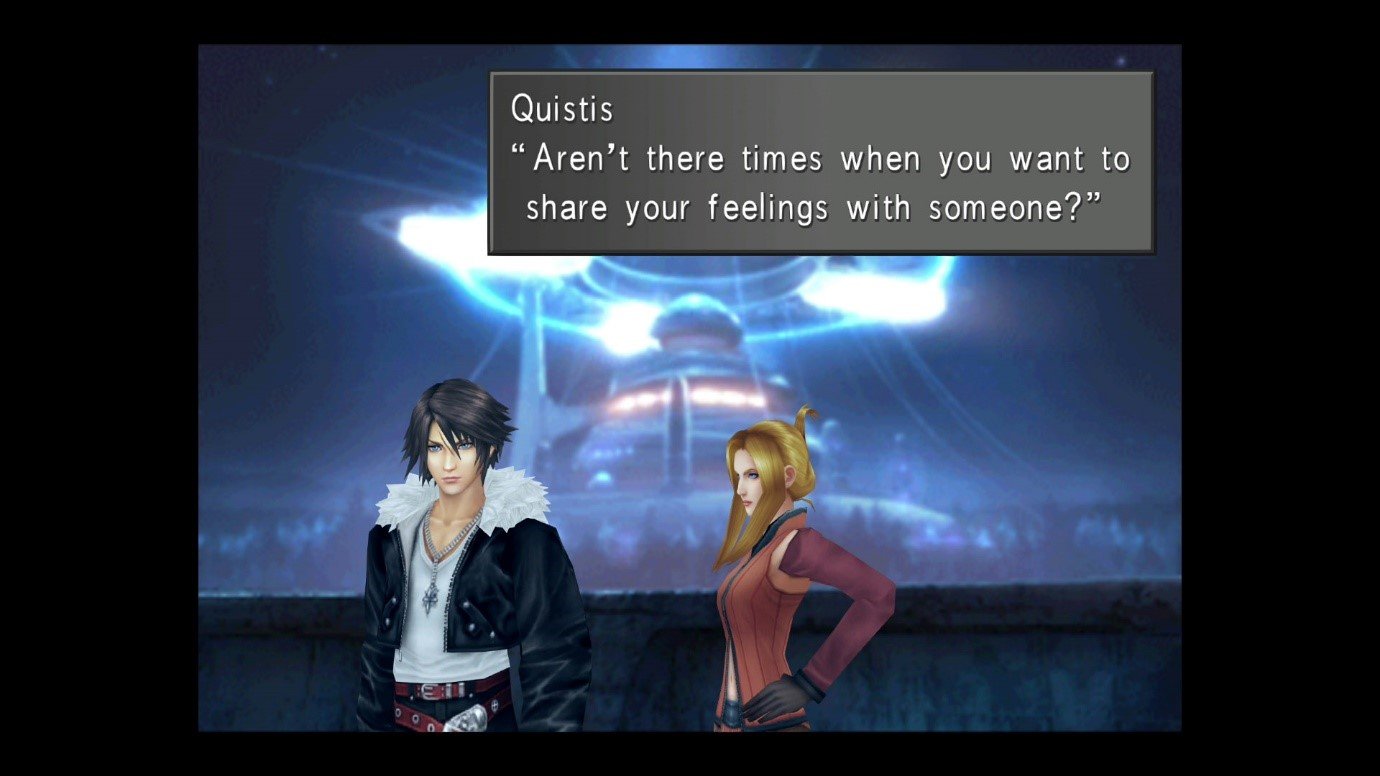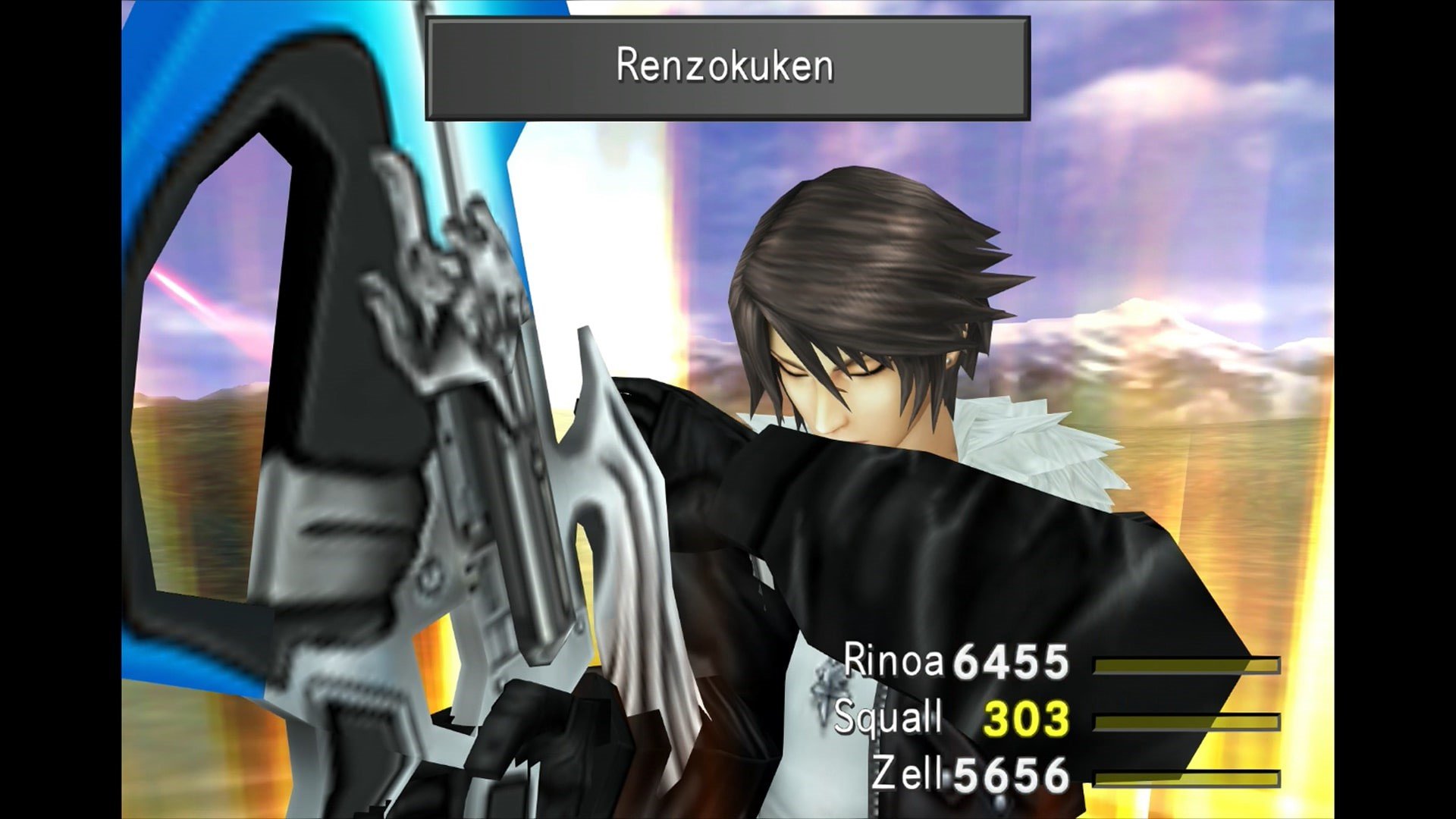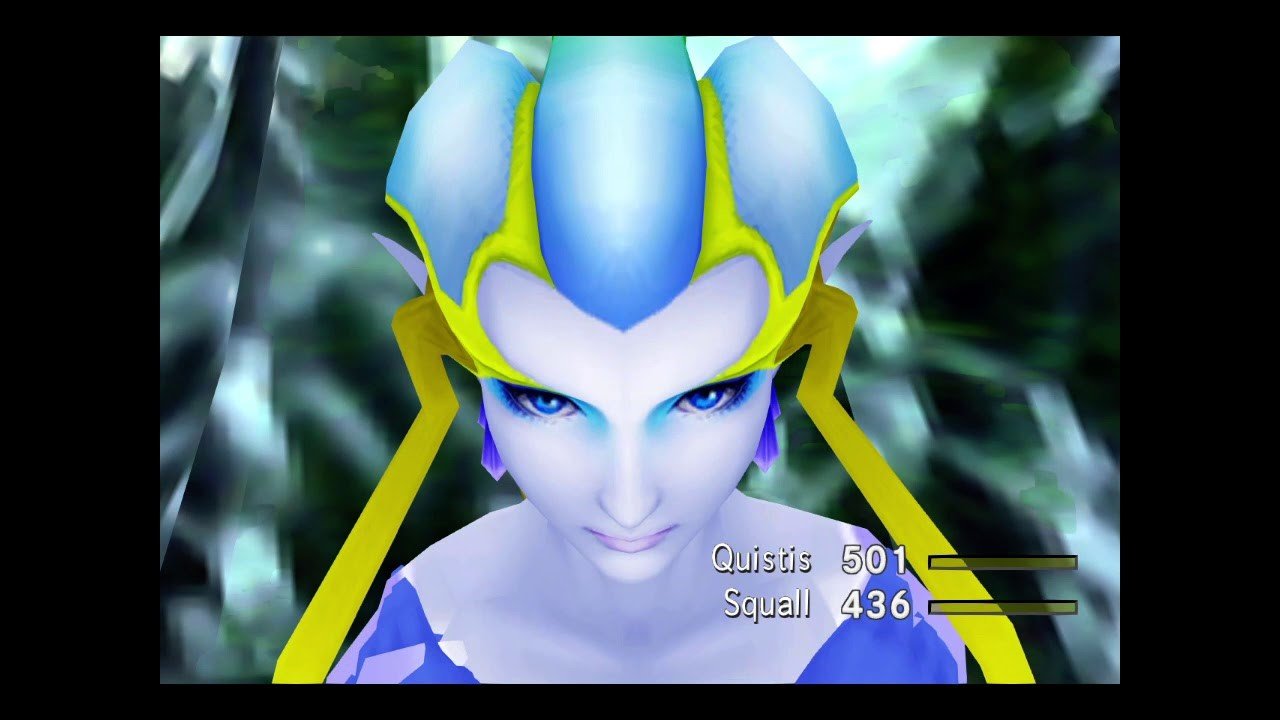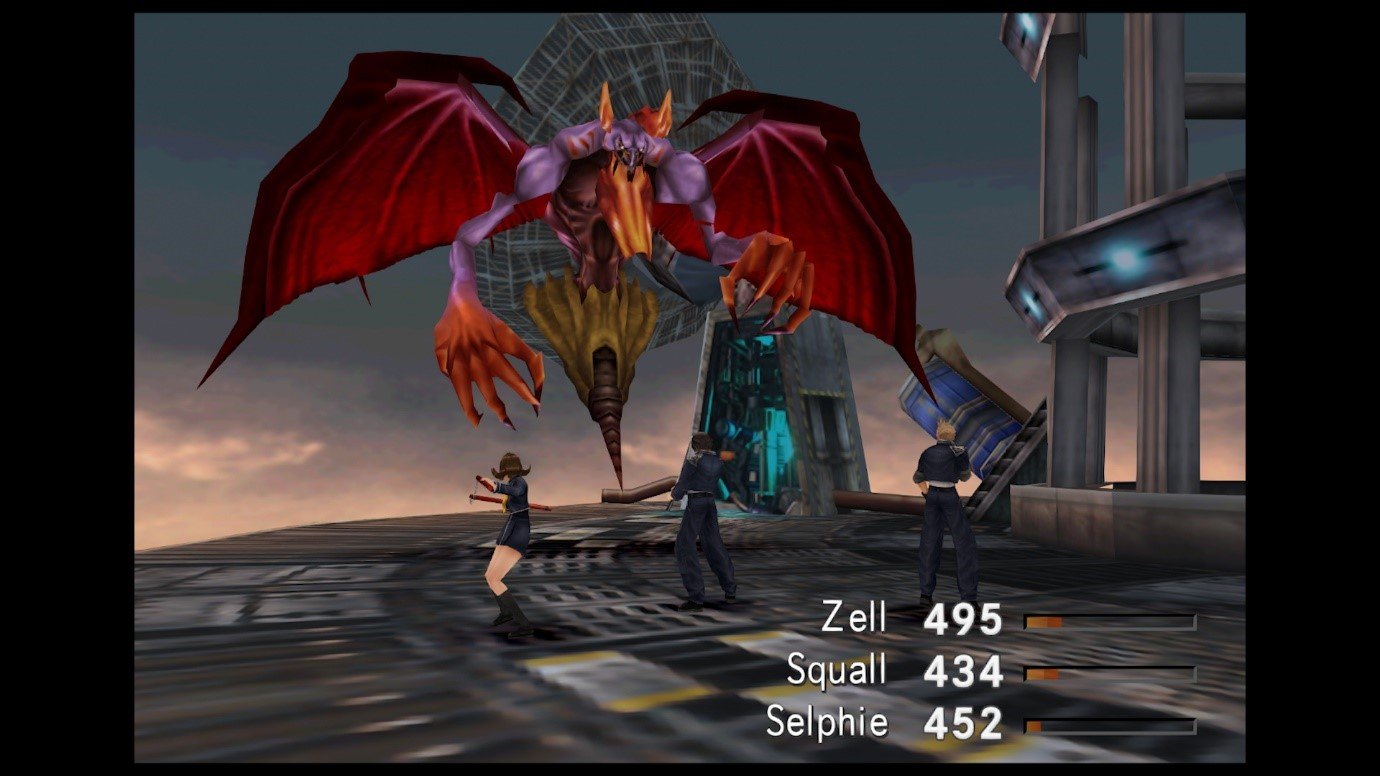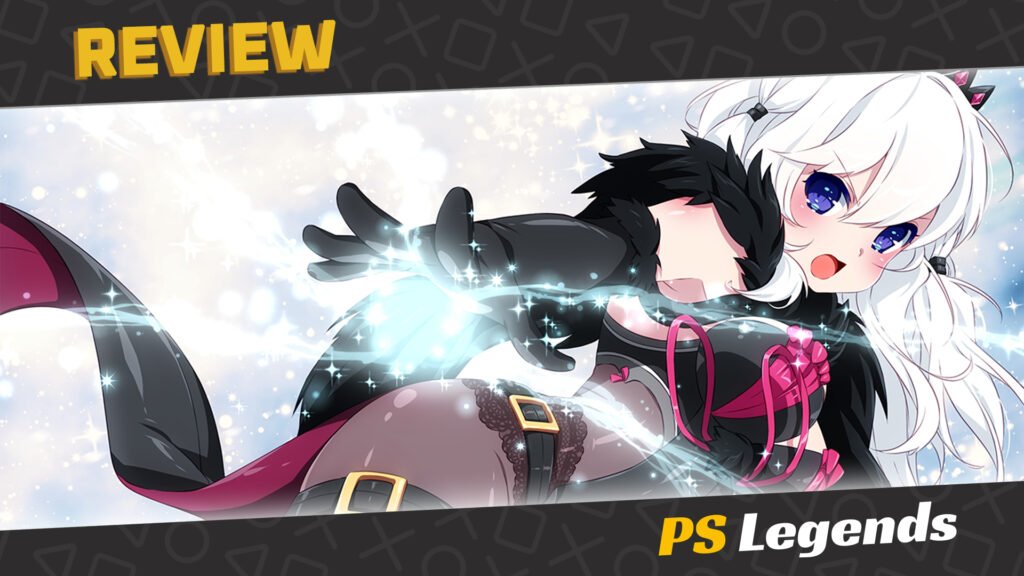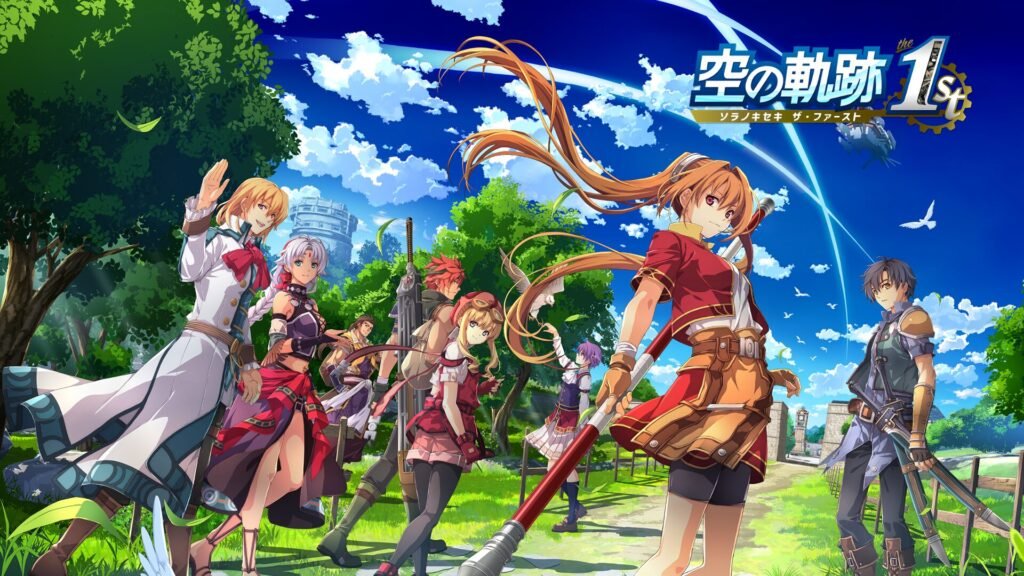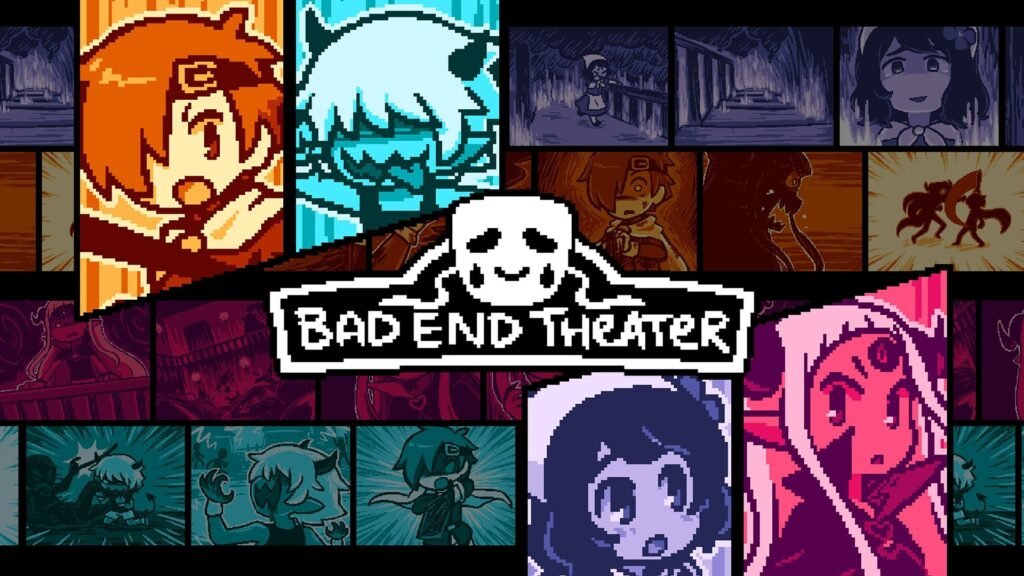It’s a rare privilege to be able to delve back through gaming history to review one of the greatest games of all time. Final Fantasy VIII is not just a masterpiece of a game. It’s one that holds a special place in my heart, mainly because I connected with it on such a personal level back when it first came out on PC in 2000. I need to do this one justice, so brace yourselves for a review with a personal twist.
Introduction
Teenage me could throw myself into the story wholeheartedly when you have characters with such relatable realism. I saw myself as something of an Irvine; a hopeless romantic who wants to make that intimate connection with someone but comes across as something of a sex-pest in the process. Give me a break, I was young.
Then you’ve got Selphie, the adorable girly-girl we all fall for at some point, only to learn she’s too immature to see you as anything other than a friend. That’s where our protagonist, Squall, steps in. He’s the person I became after college; moody, world-weary, and very much a proud loner since he has no patience left for the nonsense of others.
There’s one little ray of sunshine that made life back then a lot more tolerable, and her name is Quistis. Quistis is the perfect girl. She’s beautiful, talented, beautiful, supportive, and very, very beautiful. I was very much in love with her back then. Maybe I still am. She’s that girl you secretly like but never make a move because you think she’s out of your league, but deep down she actually likes you too, so you both end up missing out when you inevitably go your separate ways.
It doesn’t end there. Zell represents that hyperactive, hotdog-loving inner child we all grow out of, while Rinoa is the ‘keeper’; that girl who makes us feel special, helping us evolve into the best version of ourselves. Honestly, I could go on for pages about the characters as I’ve barely scratched the surface, but we’d better move on to the story before this turns episodic like Final Fantasy VII.
Story
Final Fantasy VIII is set on an unnamed world. The setting is refreshingly European in design and features a blend of modern-era and futuristic locales. The planet contains five major landmasses, with Esthar, the largest, covering most of the eastern portion of the map. Galbadia, the second-largest continent, lies to the west, and contains many of the game’s locations. The northernmost landmass is Trabia, an Arctic region. Positioned roughly in the middle of the world map lies Balamb, the smallest continent, the island on which the game begins.
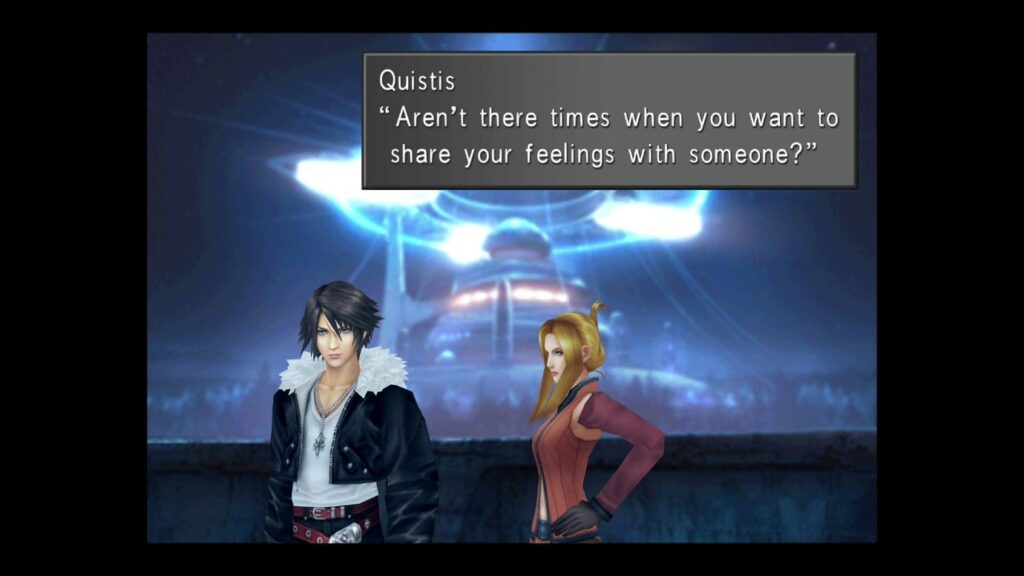
The remaining landmass is small and mostly desolate, riddled with rough, rocky terrain caused by the impact of a ‘Lunar Cry’, an event where monsters from the moon fall to the planet. The southernmost landmass includes an archipelago of broken sections of land that have drifted apart. Islands and marine structures flesh out the game world, and a handful of off-world locations round out the playable areas.
Back to Balamb, specifically the Balamb Garden mercenary school. Squall and company aren’t just a group of live-in high-school/college classmates, oh no. They’re also a group of highly trained, kick-ass, magic-equipped mercenaries, known to most as ‘SeeD’. Tasked with settling conflicts throughout a highly militaristic and xenophobic world, SeeD are pushed into direct political struggles.
When Squall and his team encounter a mysterious sorceress, Edea, pulling the strings behind the invasive nation of Galbadia, and an equally mysterious telepathic girl who can allow the party to experience past events through the eyes of a soldier named Laguna, the party soon learn that not only are certain past events repeating themselves, but your friends may have a far more personal stake in the global state of affairs than first thought.
Gameplay
Your party will frequently travel across the world map in a variety of ways, including on foot, car, series mascot Chocobos, trains, and airship. The field map consists of controllable 3D characters overlaid on one or more 2D pre-rendered backgrounds, which represent environmental locations such as towns or forests. The battle screen is a 3D model of a location such as a street or room, where turn-based fights between playable characters and CPU-controlled enemies take place.
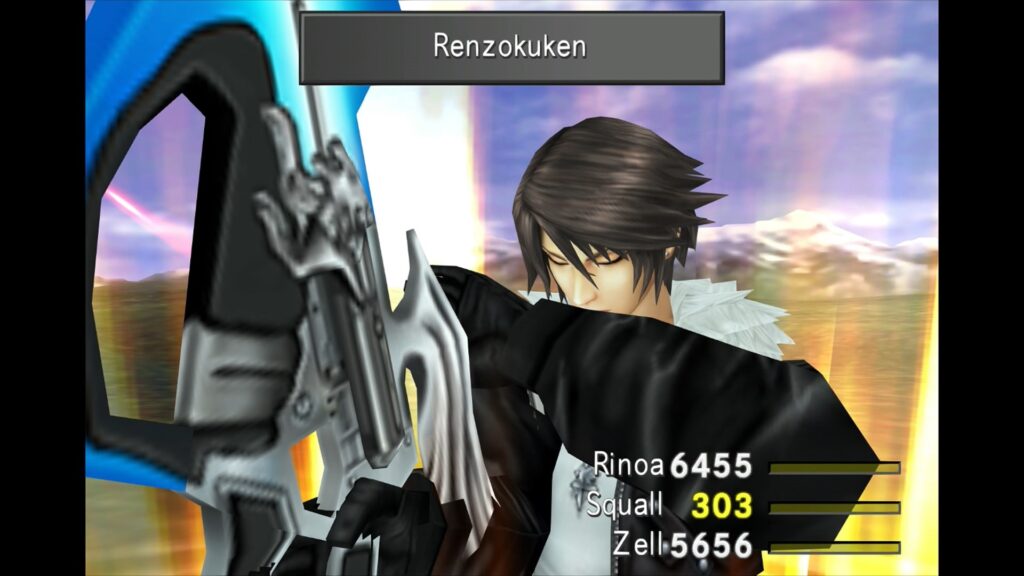
Of course, it wouldn’t be Final Fantasy without the flashy magic which the series is famous for. The game certainly delivers here, but this is also where some players lose their way. Whilst Final Fantasy VIII is true classic Final Fantasy, with most elements returning from Final Fantasy VII, the magic is a mechanic of its own.
Put simply, each character can equip (or ‘junction’ to use the in-game term) elemental Guardian Forces which you can then summon in battle to significantly damage your enemies whilst also taking damage instead of your party members during summoning. You’ll also learn skills from those Guardian Forces too. That’s the basics of it, and more than enough to get you through the game.
If you want to take things a step further, you can also ‘junction’ your individual magic spells to your party members which will raise the stat which it’s equipped to. You don’t really need to do this since enemies will level up when Squall does, meaning the skills you use in battle are far more important than the micromanagement of stats. It’s not hard to get your head around once you make the commitment to cut down on the jargon.
What this also means is that the game is only as difficult as you make it. The junction system’s flexibility affords the player a huge amount of customisation. Grinding levels actually makes your enemies stronger, while learning and equipping skills makes your character(s) stronger. Your discovery and usage of Guardian Forces also makes a major contribution to your firepower.
Previous titles provided each character with a limited pool of magic points that were consumed by each spell, however in Final Fantasy VIII, you can ‘Draw’ spells either from enemies in battle, Draw Points distributed throughout the environments, or by refining them from various items. Spells are then stocked on characters as quantified inventory and are consumed one by one when used.
Like in Final Fantasy VII, characters have unique abilities called Limit Breaks which range from powerful attacks to supportive spells. While the characters in Final Fantasy VII receive Limit Breaks after incurring significant damage, in VIII, Limit Breaks become available only at low health under normal circumstances. The new magic spell Aura increases the probability of Limit Breaks appearing, regardless of a character’s remaining hit points.
Final Fantasy VIII also introduced interactive elements to complement Limit Break animations. These interactive sequences, which vary between character, weapon, and Limit Break, range from randomly selected magic spells to precisely timed button inputs. Successfully completing an interactive sequence increases the potency of the Limit Break.
If you want to make things especially easy and/or streamlined for yourself, Final Fantasy VIII Remastered includes a trio of cheats that are available from the beginning of the game. Clicking the left and right thumb sticks can enable or disable random encounters, boost the game speed and max out your party’s HP and unlock your Limit Breaks. These cheats also don’t disable trophies, so feel free to play around with them.
Outside of the battling and exploring, Final Fantasy VIII introduces an incredibly addictive collectible card-based mini-game called Triple Triad. Triple Triad is played on a 3×3 grid, with both players having five cards as their hand for the game. The goal is to use the competing values on the card to turn over an opponent’s red cards to blue and end up with more blue cards on the board until the 3×3 board is completely filled. It’s very simple, and a great incentive to hunt down high-stat cards.
Graphics/Sound
There’s a reason that this edition of Final Fantasy VIII received the ‘Remastered’ branding. Whilst the 2D backdrops and FMVs have only received a minimal amount of upscaling, the character models of at least the primary and secondary characters have been replaced with brand new, highly-detailed, HD models, replacing those pixelated, overly polygonal abominations from the original release. It’s a surprisingly stunning addition which really helps bridge that generation gap.
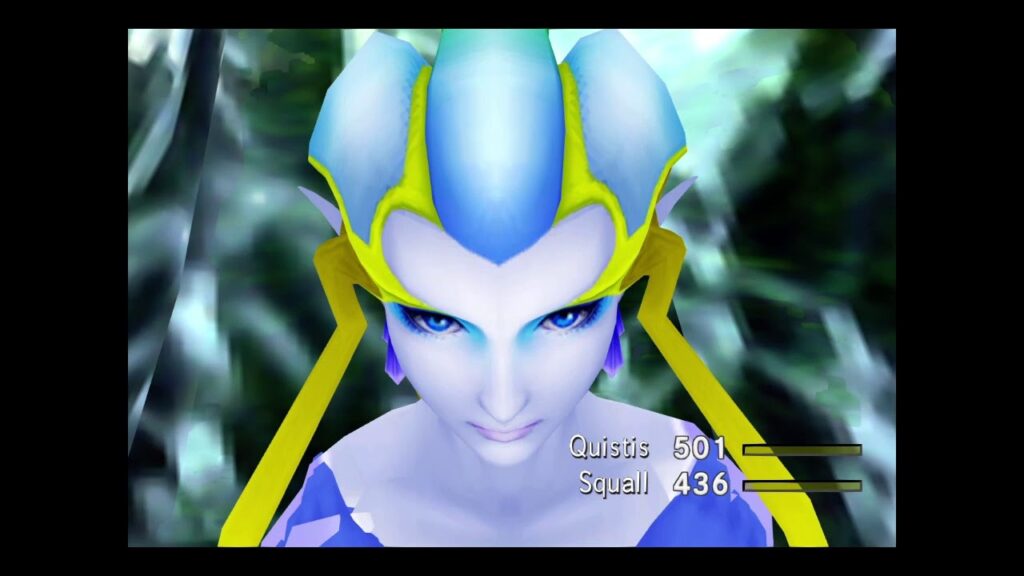
The soundtrack remains largely untouched, but when even the original, base-edition of the game features beautifully clear piano tracks, a couple of which feature vocals, it’s difficult to ask for more when you’ve already got something remarkable. Regular series composer Nobuo Uematsu wrote the soundtrack for Final Fantasy VIII, and it’s easily one of his best works.
Uematsu is documented as basing the songs on the emotional content of the scenes in which they are played. The score is best known for two songs in particular: ‘Liberi Fatali’, an ominous Latin choral piece that is played during the introduction to the game, and ‘Eyes On Me’, a ballad serving as the game’s romantic theme, performed by Chinese singer Faye Wong. They are far from the only stand-out tracks. Incredible battle themes such as ‘Don’t Be Afraid’ and ‘The Man with the Machine Gun’ will forever be cemented in my memory as musical masterpieces.
Replayability/Trophies
If you want to get the most out of the game and earn yourself a platinum trophy in the process, then it might be time to dust off that old strategy guide since several trophies are missable or highly time-sensitive. These include finding all of those elusive Guardian Forces and completing a couple of the game’s lengthier side-quests.
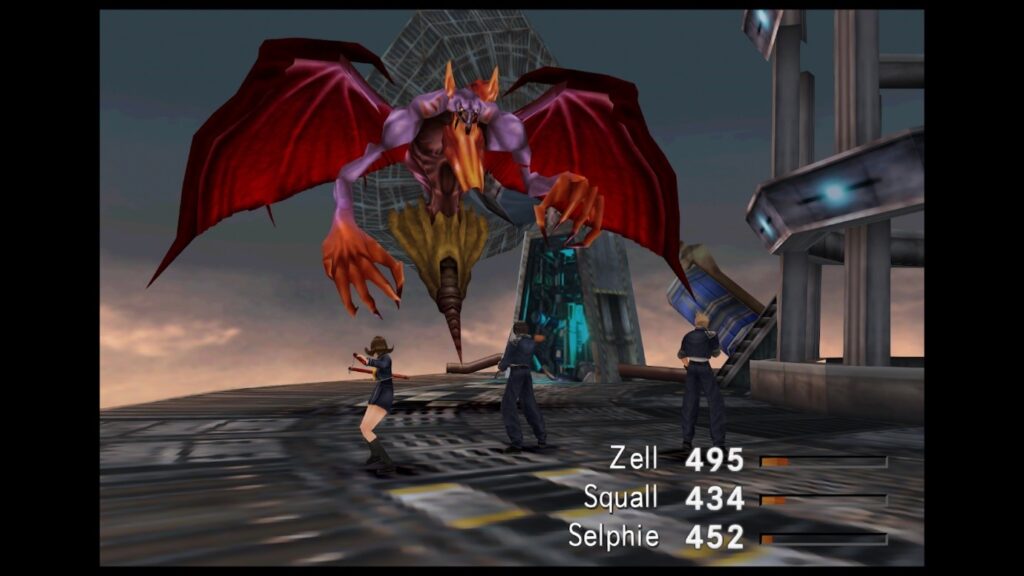
Get it right the first time, dabble a little in the Triple Triad card game, grind 1,000 kills and defeat a super-boss and that platinum can be all yours in around 40 hours, so it could be worse if you do need to restart, plus you’ll get to experience a masterpiece all over again, right?
Conclusion
It’s a beautiful take on a war story with a fantasy twist, featuring ample amounts of love, loss and tragedy that only Final Fantasy can deliver. There are also returning themes here from previous games which go a long way in welcoming back the fans. Returning from Final Fantasy VII is the importance of memory and identity, and how one can certainly influence the other.
Addiction is another theme, with the party’s summonable Guardian Forces granting them incredible power, with their regular usage effectively acting as an easy mode for the game, yet you might question your actions when you learn that such power comes at the cost of the user’s memories. Fortunately, using them in battle won’t shape the outcome of the game, but it certainly gives the player something to think about.
This is a remaster done right. It respects the aging fans time by adding free cheats to make for quicker, easier playthroughs, whilst also dramatically improving the visuals to such a degree that the game doesn’t look out of place on current hardware. It’s not a full remake in a modern engine, but it’s enough. More than enough.
Thank you Square. Thank you for allowing me to revisit one of those rare, happy times from my adolescence, and making it presentable enough to live up to our privileged, modern standards. If ever there was a time to retry the intricate mechanics of the game, it’s with this glorious remaster. This is not only a piece of gaming history, but a pretty perfect package.
Joys
- Fantastic visual makeover
- Cheats make the game a breeze
- Same incredible game
Cons
- It’s Final Fantasy VIII. What cons?
